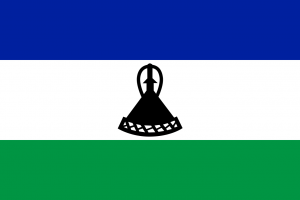Language/Southern-sotho/Culture/Traditional-Music-and-Dance
| ◀️ Traditional Clothing — Previous Lesson | Next Lesson — Modes of Transportation ▶️ |
Introduction[edit | edit source]
Welcome to the lesson on Southern Sotho traditions! In this lesson, we will explore the vibrant world of traditional music and dance in the Southern Sotho culture. Music and dance play a vital role in cultural events and serve as a means of preserving the rich heritage of the Southern Sotho people. Through this lesson, you will gain insight into the significance of traditional music and dance, learn about different musical instruments, and discover the various dance styles that are an integral part of Southern Sotho culture.
Cultural Significance of Traditional Music and Dance[edit | edit source]
Traditional music and dance hold immense cultural significance in Southern Sotho society. They are not only forms of entertainment but also serve as a means of expressing emotions, telling stories, and preserving the history and values of the community. Southern Sotho traditional music and dance are deeply rooted in the daily lives and rituals of the people, and they are an essential part of various ceremonies and celebrations.
Musical Instruments in Southern Sotho Culture[edit | edit source]
Southern Sotho traditional music is characterized by its distinctive rhythms and melodies, which are created using a variety of musical instruments. These instruments play a significant role in the overall sound and atmosphere of the music. Here are some of the key musical instruments used in Southern Sotho traditional music:
1. Lesiba[edit | edit source]
The lesiba is a traditional mouth-resonated musical bow that is unique to the Southern Sotho people. It consists of a string, usually made from animal sinew, attached to a flexible wooden or bamboo stick. The musician plucks the string while simultaneously blowing air across the mouthpiece, creating a hauntingly beautiful sound.
2. Setinkane[edit | edit source]
The setinkane is a thumb piano that is widely used in Southern Sotho traditional music. It consists of a wooden or metal soundboard with metal tines of different lengths attached to it. The musician plucks the tines with their thumbs to produce melodic tones.
3. Marimba[edit | edit source]
The marimba is a percussion instrument that consists of a set of wooden bars of varying lengths. Each bar is tuned to a specific pitch, and when struck with mallets, it produces a resonant sound. The marimba is often played in ensembles and adds a rich and vibrant texture to Southern Sotho music.
4. Kudu Horn[edit | edit source]
The kudu horn, also known as lekhoi, is a traditional wind instrument made from the horn of a kudu antelope. It is often used in ceremonial music and produces a deep and resonant sound when blown. The kudu horn holds cultural significance and is associated with the calling of ancestral spirits during rituals.
Dance Styles in Southern Sotho Culture[edit | edit source]
Dance is an integral part of Southern Sotho culture, and various dance styles are performed during different occasions and events. Each dance style has its own unique movements, rhythms, and symbolic meanings. Here are some prominent dance styles in Southern Sotho culture:
1. Mohobelo[edit | edit source]
Mohobelo is a popular traditional dance style that originated from the Basotho people. It is a couple's dance characterized by energetic footwork, rhythmic clapping, and vibrant costumes. Mohobelo is often performed during social gatherings, weddings, and other festive occasions.
2. Mokhibo[edit | edit source]
Mokhibo is a traditional dance style that is performed in a circle, with dancers holding hands and moving in a synchronized manner. It is often accompanied by singing and drumming. Mokhibo is a celebratory dance and is performed during important events such as harvest festivals and weddings.
3. Sello[edit | edit source]
Sello is a ceremonial dance performed by young girls and women. It is characterized by graceful movements, intricate footwork, and the use of colorful traditional attire. Sello is often performed during initiation ceremonies, coming-of-age celebrations, and other significant cultural events.
4. Khokho[edit | edit source]
Khokho is a traditional dance style that is performed by men. It involves high-energy movements, including jumping, stomping, and leaping. Khokho is often accompanied by the rhythmic beats of drums and other percussion instruments. It is performed during celebrations, warrior rituals, and other male-centric events.
Exercises[edit | edit source]
1. Match the following musical instruments with their descriptions:
* Lesiba * Setinkane * Marimba * Kudu Horn
a. A mouth-resonated musical bow b. A thumb piano c. A percussion instrument with wooden bars d. A wind instrument made from a kudu horn
Solution: * Lesiba - a * Setinkane - b * Marimba - c * Kudu Horn - d
2. Choose the correct dance style based on the given description:
a. A couple's dance characterized by energetic footwork and vibrant costumes. b. A traditional dance performed in a circle, accompanied by singing and drumming. c. A ceremonial dance performed by young girls and women. d. A high-energy dance performed by men, involving jumping and stomping.
Solution: a. Mohobelo b. Mokhibo c. Sello d. Khokho
Conclusion[edit | edit source]
In this lesson, we have explored the importance of traditional music and dance in Southern Sotho culture. We have learned about the various musical instruments used in Southern Sotho traditional music, such as the lesiba, setinkane, marimba, and kudu horn. Additionally, we have discovered the different dance styles, including mohobelo, mokhibo, sello, and khokho. Traditional music and dance are not only forms of entertainment but also serve as powerful tools for preserving the cultural heritage of the Southern Sotho people. By engaging with and learning about these traditions, we can gain a deeper understanding and appreciation for the rich and diverse culture of the Southern Sotho people.
Other Lessons[edit | edit source]
| ◀️ Traditional Clothing — Previous Lesson | Next Lesson — Modes of Transportation ▶️ |

